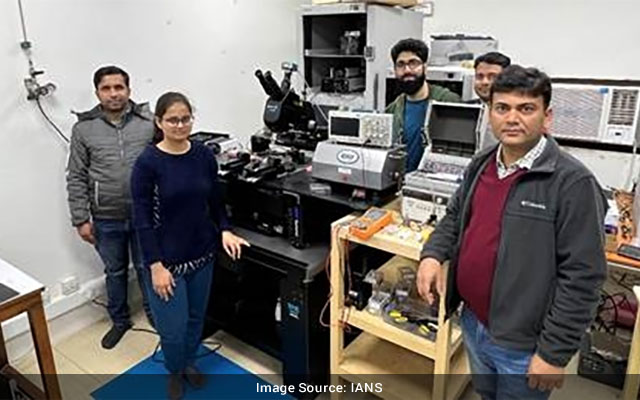New Delhi: Indian researchers have developed a high-performance, industry-standard model transistor that can be used to make high-power radio frequency circuits, which include amplifiers and switches that are used in wireless transmission and are useful for space and defence applications.
The high-performance industry-standard model has been made for aluminium gallium nitride (AlGaN/GaN) High Electron Mobility Transistors (HEMTs) with simple design procedures. As AlGaN/GaN HEMTs can also extend the power level of solid-state microwave circuits by a factor of five to ten, resulting in an appreciable reduction in the overall chip size and cost, the standard developed can significantly reduce the development cost of the circuits and devices for transmitting high-frequency signals.
“The technology is rapidly gaining popularity owing to its high performance and efficiency. It has two excellent properties – high mobility and high-power performance. These properties reduce the noise figure and complexity while designing low noise amplifiers – used in wireless transmission like mobile phones, base stations – while increasing the achievable bandwidth,” a Science and Technology Ministry release said.
AlGaN/GaN HEMTs have become the technology of choice for high-frequency and high-power applications like 5G, radars, base stations, satellite communications, etc. To design wideband power amplifiers, a fully robust and accurate physics-based radio frequency GaN HEMT model is of prime importance.
In the current work, the team led by Prof Yogesh Singh Chauhan at IIT Kanpur developed and standardised a physics-based compact model for AlGaN/GaN HEMTs – the Advanced Spice Model for GaN-HEMTs. “The standard model for circuit design developed simplifies the design procedure for high-performance RF circuits and helps in automating the design efforts as well as brings down the overall development cost. Besides, it can accurately predict the AlGaN/GaN HEMT’s behaviour in circuit design,” the release said.
The development of the model was partially supported by the Fund for Improvement of S&T Infrastructure (FIST) and the Technology Development Programme (TDP) schemes of the Department of Science and Technology.
The measurements facility, funded by the FIST and the TDP, is being heavily used by the ISRO, the DRDO, and others to characterise the semiconductor devices for high-frequency applications.
Prof Chauhan’s team measures the current, capacitance, and RF characteristics of the devices under test and uses parameter extraction tools to extract the parameters of the ASM-HEMT model for a given technology. Once the model behaviour is in close agreement with the measured characteristics, the model is validated for practical applications.
The team is concurrently working on circuit design and has delivered a state-of-the-art commercial GaAs-based LNA with one of the lowest reported noise figures in the market. Ongoing efforts include LNA, and PA design based on the AlGaN/GaN material system, the release added.

















